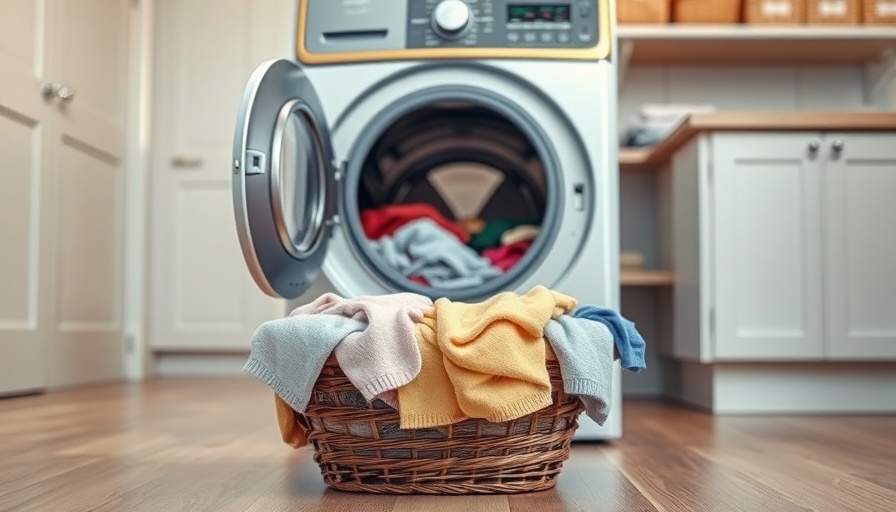
A Hidden Danger in Your Laundry Routine
Doing laundry can feel like a chore filled with endless rules - from separating colors to decoding washing symbols. However, amidst all these necessities, one critical aspect that often goes ignored is the dryer vent. Regularly cleaning this component not only enables your clothes to dry more swiftly but also significantly reduces fire hazards. According to Carolyn Forté, directly from the Good Housekeeping Institute, a clear dryer vent is essential for optimal airflow. "A clogged vent traps hot air and moisture, drastically extending drying times," she explains, underscoring the practicalities alongside safety concerns.
Why Dryer Vent Maintenance Matters
Consider this: clogged dryer vents lead not only to higher electricity bills but also to potentially dangerous situations. When lint accumulates, it can ignite, transforming your laundry appliance into a fire risk. Surprisingly, even obstructions outside your house—such as leaves or bird nests—can contribute to this issue. In summary, maintaining a clean vent safeguards your home and conserves energy. When inquiring about the frequency of vent cleanings, Forté recommends a professional cleaning at least once a year, paired with routine checks to ensure the area around the dryer remains clear.
Recognizing Signs of Vent Issues
It’s critical to stay vigilant for signs that your dryer vent may be blocked. Slower drying times, reduced airflow, strange noises emanating from the dryer, or excessive lint build-up can all indicate a problem. Moreover, if moisture accumulates around the venting area, it signals a potential blockage. To assess the situation, feel for hot air blowing from the vent's exit. If you notice irregularities, it’s prudent to call a professional for help. Addressing these issues promptly not only returns your dryer to full efficacy but also preemptively averts major repairs.
Future Trends in Home Care Appliances
As we absorb more technology into our daily routines, the landscape of home appliances evolves. With smart technology emerging, future clothes dryers may integrate sensors that alert users of potential vent clogs or overheating. These advancements promise to elevate home safety standards, allowing for more efficient laundry processes. The introduction of home automation systems may also simulate optimal drying function based on fabric type and load, showcasing a shift toward enhanced user-friendly features.
Making Laundry Day Easier
In a fast-paced world, finding ways to expedite laundry day is crucial. One actionable tip is to dry similar types of fabrics together. Heavier garments absorb more moisture, leading to longer drying times. When combined with lighter materials, the dryer has to work harder. Additionally, considering air-drying delicate items can complement dryer usage and prolong garment life. As we navigate these practical laundry solutions, one must remember that a clean vent remains vital. Ultimately, unpaid attention to this often-overlooked component may result in unanticipated complications.
Conclusion: Keep Your Dryer Safe and Efficient
To summarize, ensuring that your dryer vent remains clear is pivotal—not just for efficiency but for safety as well. By committing to regular maintenance and staying aware of the signs of a clogged vent, you can optimize your laundry experience while minimizing potential hazards. Prioritizing these actions not only saves time and money but also enhances your home’s overall safety. Next time you tackle that laundry basket, remember, a little diligence goes a long way!
#DryerVent, #LaundrySafety, #FireHazard, #DryerMaintenance, #CloggedVent, #EnergyConservation, #HomeSafety, #DryerEfficiency, #SmartAppliances, #LaundryTips
 Add Row
Add Row  Add
Add 




Write A Comment